
Death in Art
Henriette Kets de Vries is the Manager of the Cunningham Center for Prints, Drawings and Photographs and Assistant Curator of Prints, Drawings and Photographs at SCMA.
The art of dying well
In our youth-obsessed Western society death has become taboo, hidden away in sterile funeral homes and shiny caskets. Death, a friend only to the old and the sick, not to be talked about, not to be seen. Death throughout history was never a welcome visitor. However, in times of war, famine, or disease, when death was personal, undiscriminating, and close, visual representations of death in many forms were more commonplace. A long life was for the few and fortunate, and so the emphasis was placed on the one thing inevitable in a poor soul’s life: death.
Memento Mori
The Ars Moriendi was an originally Rhenish (German) “manual” on the art of dying well. The Cunningham Center owns an illustrated page from this intriguing piece of human history. The work highlights the medieval culture of death, which sprung up in Northern Europe around the time of the black Plague. The page in question is a 15th-century woodcut mounted on an oak panel. The book originally contained six chapters, which addressed the various elements of a good Christian death, from what to feel, how to behave, and which prayers to choose. The work was very popular at the time, widely distributed and translated in many languages. It clearly fulfilled a practical need in dire times.
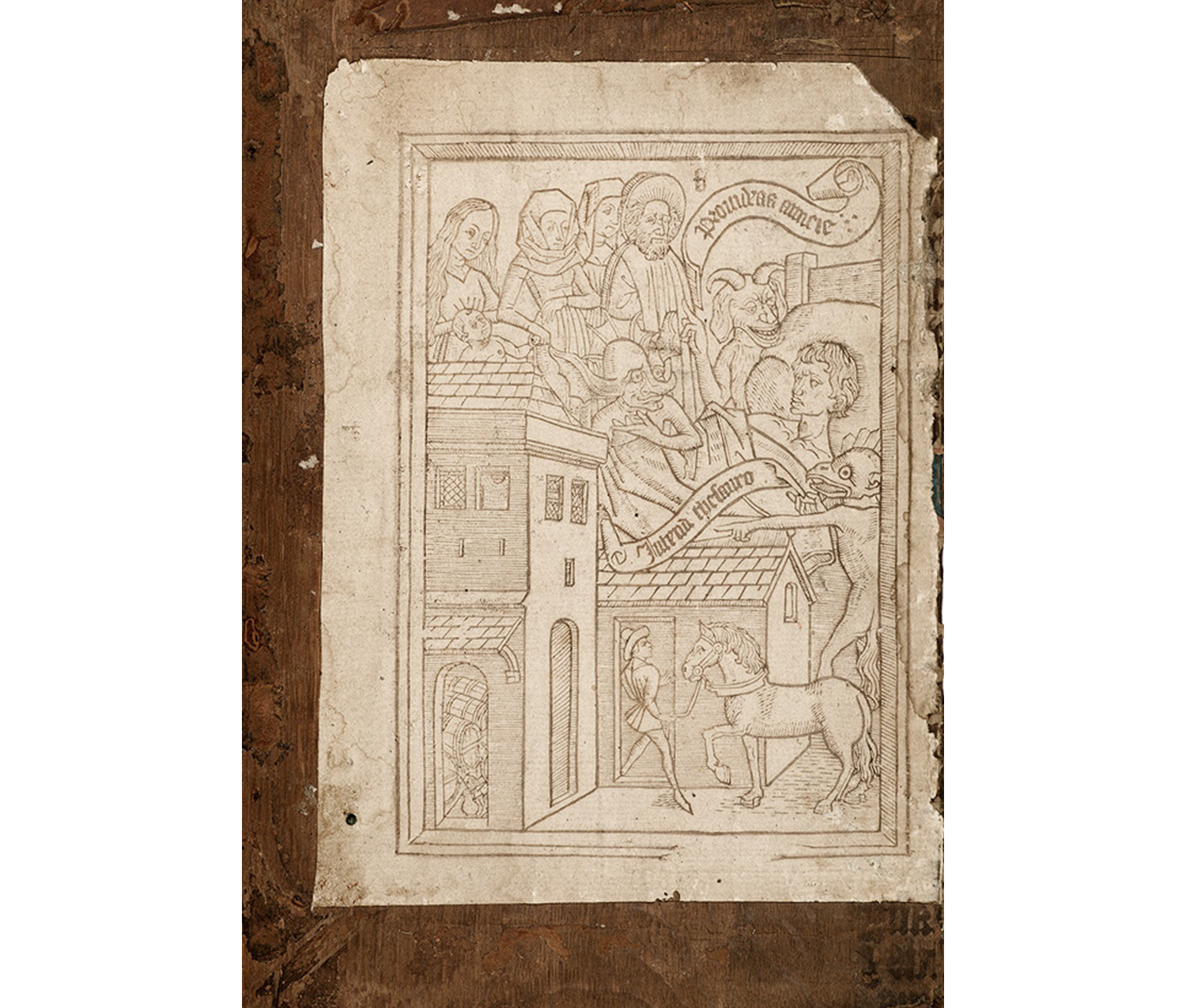
Unknown. Rhenish. The Temptation by Avarice, Plate IX from Ars moriendi, 1460–1470. Woodcut printed in grey-brown ink on paper mounted to oak board. Purchased with the Elizabeth Halsey Dock, class of 1933, Fund. SC 2005.20.
The virtuous dead
While the Ars Moriendi was written for the literate few, the illiterate would find their comfort in the churches. Catholic churches were filled with examples of “good deaths” all centered around the crucified Christ. Venerable martyrs would cover the walls, often depicted in their moment of (mostly gruesome) death or portrayed with the actual instruments of their demise by their side. Unlike saints whose lives would serve as examples, the martyr found his or her glory solely in their moment of death.
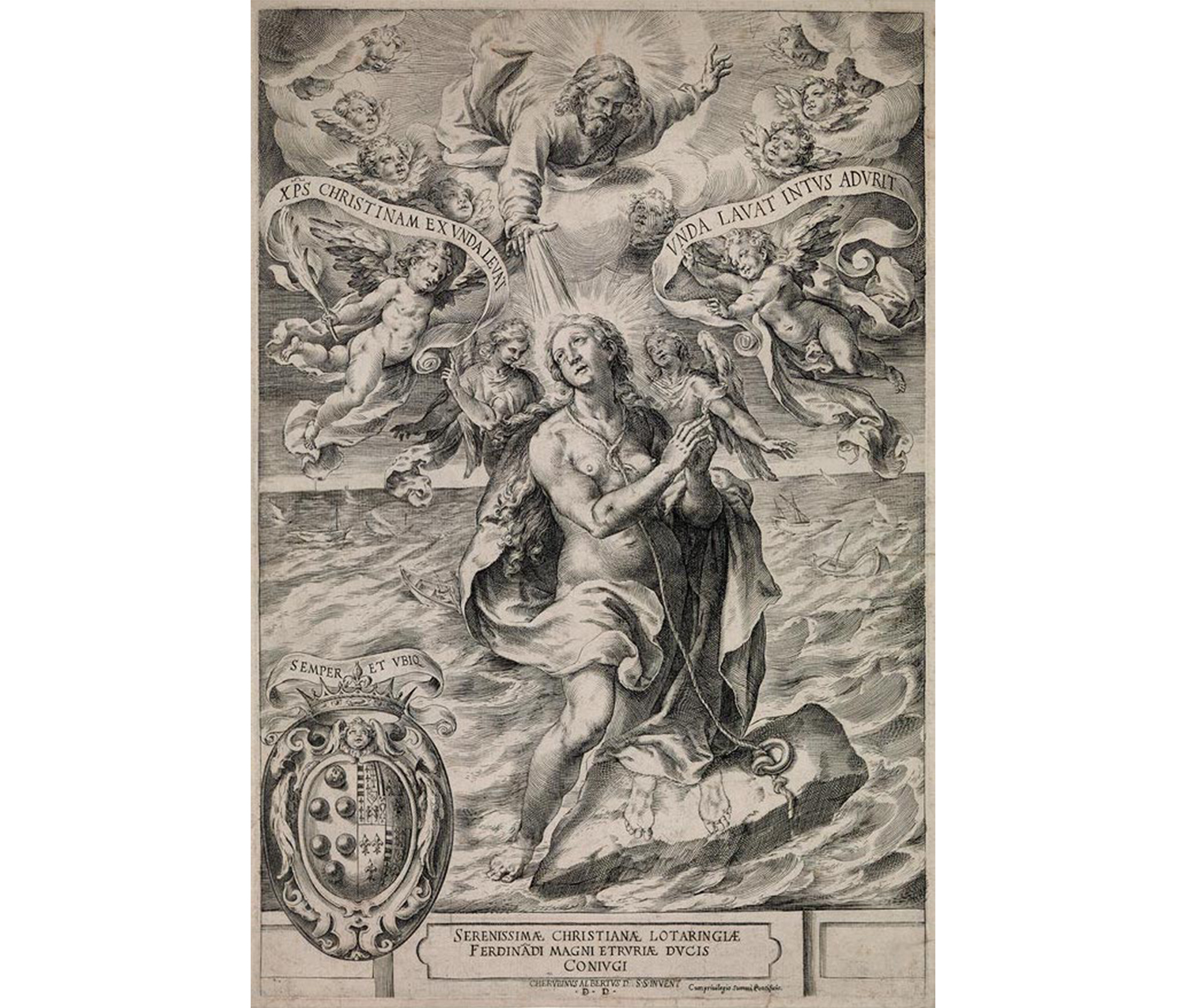
Cherubino Alberti. Italian, 1553–1615. Martyrdom of Santa Cristina de Bilsena, by January 1605. Engraving printed in black on medium-thick, moderately textured, cream-colored paper. Purchased with the Elizabeth Halsey Dock, class of 1933, Fund. SC 2011.30.2.
Death and the Maiden
In the 16th and 17th centuries the image of death remained present in art. However, death took on many new guises. German artists like Hans Baldung Grien (whose work is displayed below) turned death into a “seducer” and lover of young maidens. The virginal pallid white female is “kissed” or actually bitten by death. In Dutch there is an old saying that something has suffered from “de tand des tijds” (the tooth of time). Here death’s “kiss” could be a kiss of aging or a kiss of death. A beautiful contemporary print from our collection titled “Death and the Maiden” clearly finds its inspiration in this age-old theme.
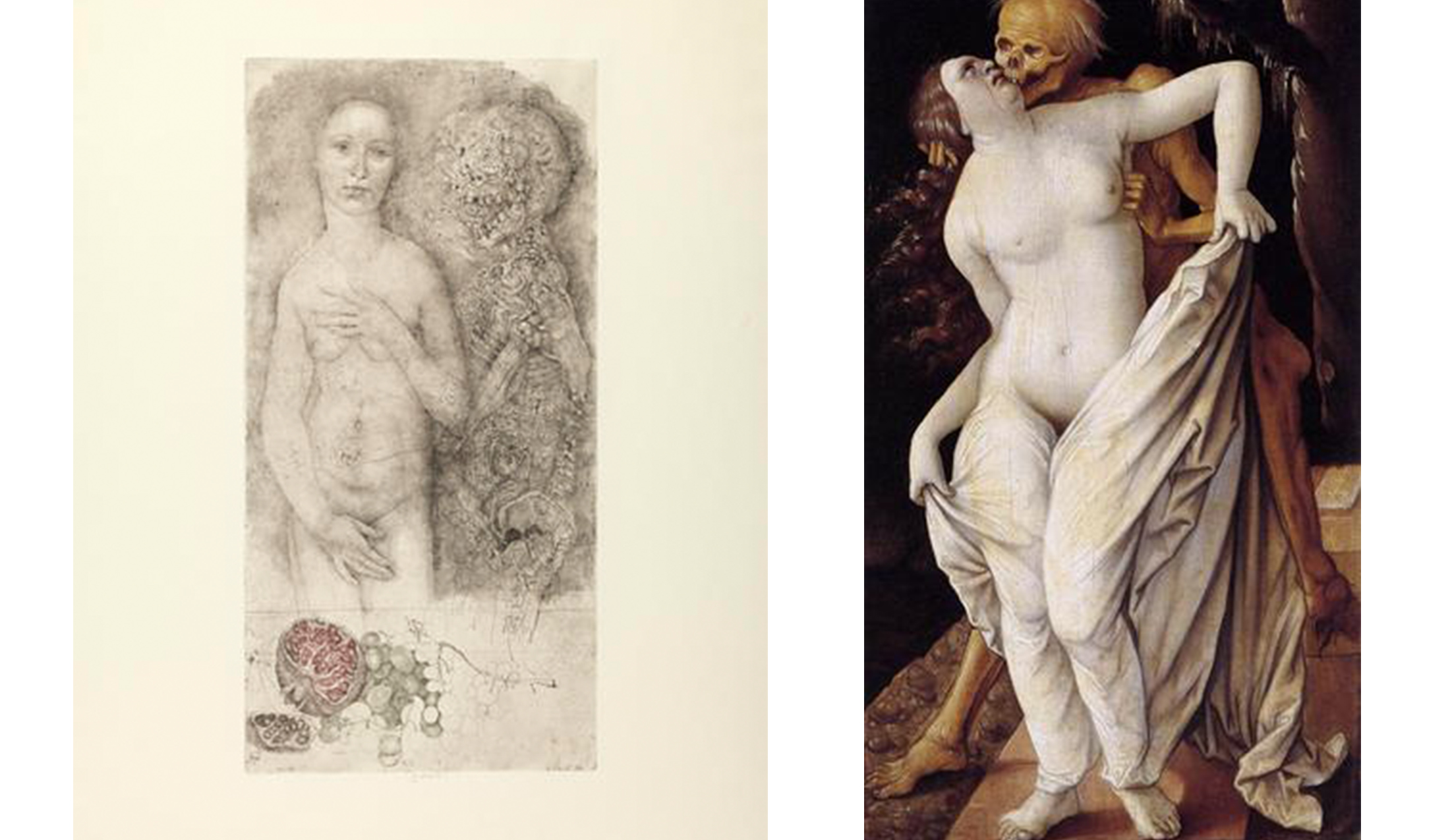
Left: Jiri Anderle. Czech, born 1936. Death and the Maiden, 1983. Soft-ground etching and drypoint printed in black and red on paper. Gift of Andrew Carron and Cathy McDonnell Carron, class of 1979. SC 2007.53.1.
Right: Hans Baldung. German, 1485–1545. Death and the Maiden, 1518/20. Oil on panel. Kunstmuseum Basel.
The Vanitas
Vanity and death were also a favorite pairing. In this Hans Thoma print from 1912 this old theme is repeated. Death holds up a mirror to the young woman reminding her of her own mortality. In turn the young fancy man in his plumed hat in this 16th century engraving by Lucas van Leyden reminds the viewer of his own mortality by pointing at the skull kept under his cloak. There is some debate among scholars regarding the true meaning of these vanitas portraits. I believe that since Christian virtues of modesty were highly praised in Protestant Dutch society the wealthy had to account somehow for their wealth by advertising their humility. While the Protestant Church believed one was already predestined to go either to heaven or hell at birth, it did not stop people from demonstrating their virtues and modesty to convince others that they were among the elect. The vanitas portrait could therefore be regarded as a sort of 16th/17th century afterlife insurance.
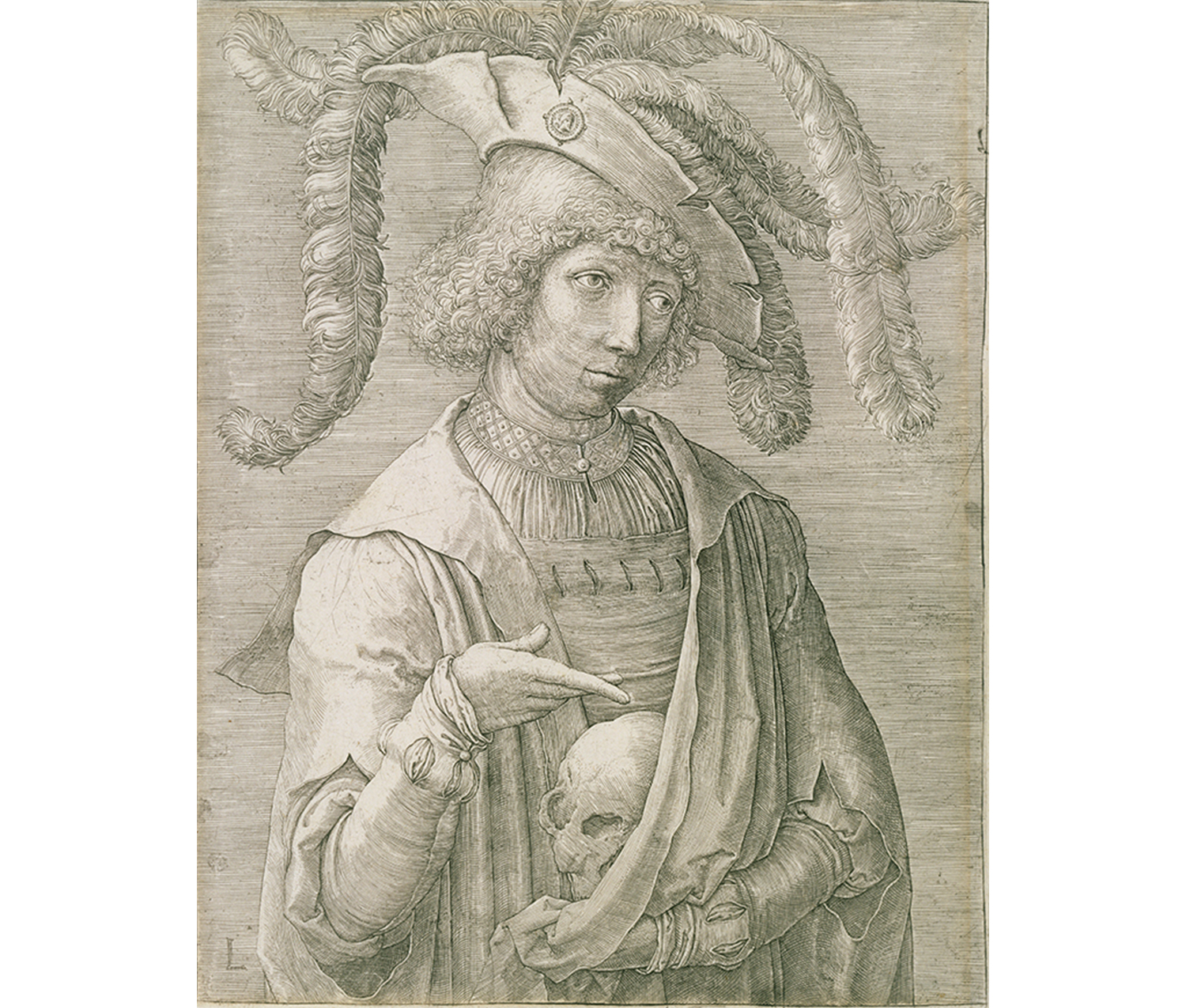
Lucas van Leyden. Early Netherlandish, 1494–1533. Young Man with Skull, n.d. Engraving on paper. Gift of the estate of Mrs. Charles Lincoln Taylor (Margaret Rand Goldthwait, class of 1921). SC 1994.20.16.
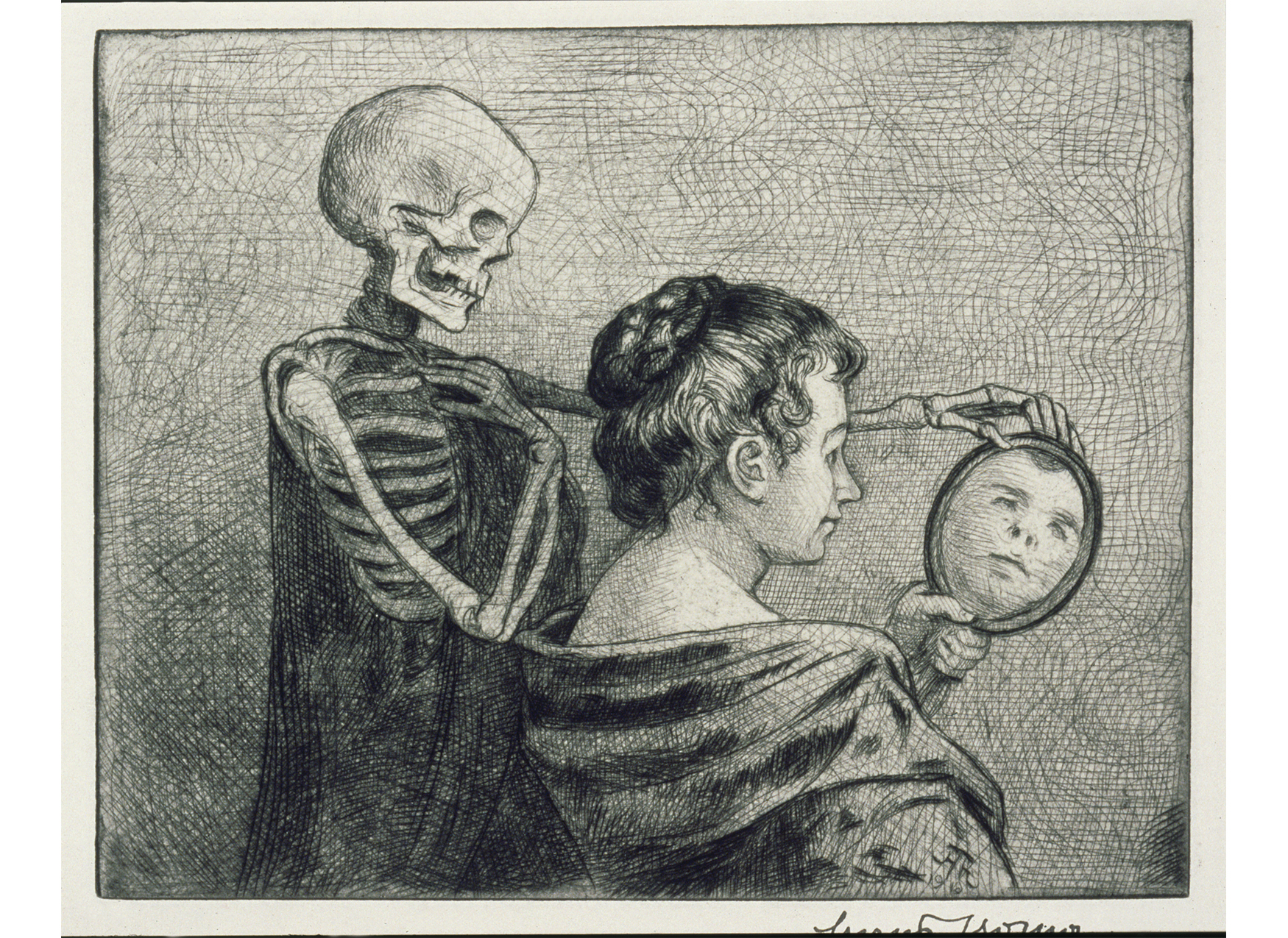
Hans Thoma. German, 1839–1924. Reminder, 1912. Drypoint on ivory wove paper. Gift of Lessing J. Rosenwald. SC 1951.41.